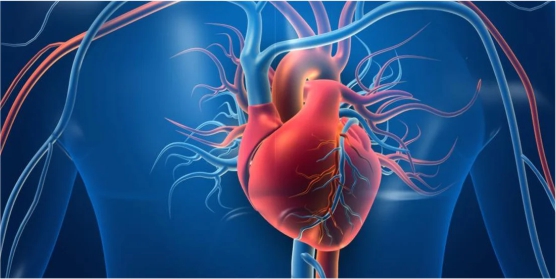Coronary Artery Disease
You can make a big difference with healthy lifestyle changes.

Coronary artery disease is a common heart condition that leads to a heart attack. In this condition, the blood vessels carrying blood to the heart (coronary arteries) are unable to send adequate blood, oxygen and nutrients to the heart muscle. This usually occurs due to blockages in the arteries. The blockages or plaques either reduce the blood flow or completely block it.
In the initial stages, the signs and symptoms of the blockage may not be visible. The symptoms begin to precipitate as the condition worsens and the heart is not receiving enough oxygen-rich blood. Over time, this reduces the blood supply to the heart causing symptoms like chest pain and shortness of breath. A complete blockage in the artery causes a heart attack.
Our highly qualified and professional cardiology team at Baderia Golden Heart Hospital provides incredible patient outcomes by applying novel cardiological diagnoses, procedures, and treatments.
Symptoms of Coronary Artery Disease
The symptoms of coronary artery disease may go unrecognized for a very long time even for decades. The symptoms, however, may slightly be visible during strenuous physical activity such as the rapid beating of the heart. As the arteries continue to narrow and as the blockage continues to develop, the heart receives lesser blood. At this stage, the symptoms include:
- Severe chest pain.
- Shortness of breath.
- Fatigue.
- Heart attack.
Diagnosis of Coronary Artery Disease
We at Baderia Golden Heart Hospital have excellent diagnostic facilities which provide an accurate cardiological diagnosis. Our state-of-the-art facilities along with the expertise of our doctors provide all-around treatment for patients with coronary artery disease.
Upon visiting our hospital, the doctors will conduct a thorough physical examination, study your previous medical history, and review your existing symptoms to take a course of action.
Following this, our doctor will run some additional tests to confirm the condition:
- Blood Tests: Blood tests will be conducted to determine the presence of other diseases that can affect the heart. Moreover, the presence of certain compounds in the blood also indicates the inefficacy of the heart. This will be evaluated from blood tests.
- Electrocardiogram (ECG): This test will be conducted to evaluate the electrical activity in your heart. This test will show the timing and lengths of your heartbeats which indicates heart failure.
- Echocardiogram: This test produces images of the heart with the help of sound waves. The test shows the size and structure of the heart along with the blood flow.
- Stress test: A stress test will be conducted to measure the health of the heart during activity. During this test, you will be asked to walk on a treadmill attached to an ECG machine. This will measure the capacity of your heart and lungs to get oxygen.
- Nuclear Stress Test: This test is similar to the treadmill stress test but it also gives images of the ECG recordings. This test shows the pathway of blood to the heart muscles at rest and during physical activity. The doctor injects a radioactive tracer which illuminates the arteries on the images.
- Imaging tests: A series of imaging tests such as X-rays, CT scans, and MRIs will be conducted to study the image of your heart and evaluate heart issues.
- Coronary angiogram: In this test, the doctor will inject a dye into your blood vessels through a catheter. This will make your arteries visible on the X-ray. It will help the doctor in determining any blockage.
Surgery for Coronary Artery Disease
At Baderia Golden Heart Hospital, our main aim is to offer patients comfort and satisfaction. We curate the most suitable treatment strategy for our patients by studying their condition. Usually, the first line of treatment includes medications and lifestyle changes. Surgery is recommended if the medications and lifestyle changes are unable to improve the condition. The doctor may perform the following surgeries depending on your condition:
- Coronary Angioplasty and Stenting:
Also called percutaneous coronary intervention (PCI). In this procedure, the doctor will open the clogged artery to improve blood flow. The procedure is divided into two parts; angioplasty and stenting.
During angioplasty, the cardiologist will insert a catheter into the blocked artery. A tiny balloon will be inflated to help widen the artery and improve blood flow.
In some cases, a stent (wire mesh tube) may also be placed in the artery. This stent helps in keep the artery open and lowers the risk of narrowing in future.
- Coronary Artery Bypass Surgery (CABG):
Also called open-heart surgery. In this procedure, the heart surgeon will take a healthy blood vessel from another part of your body to create a new path for blood flow in the heart. This surgery is usually performed as an emergency procedure to narrow down the blocked arteries.
